James H. Ward House
Introduction
Text-to-speech Audio
Images
2016 photo of Ward House by Carol Highsmith (Library of Congress Highsmith Archive)
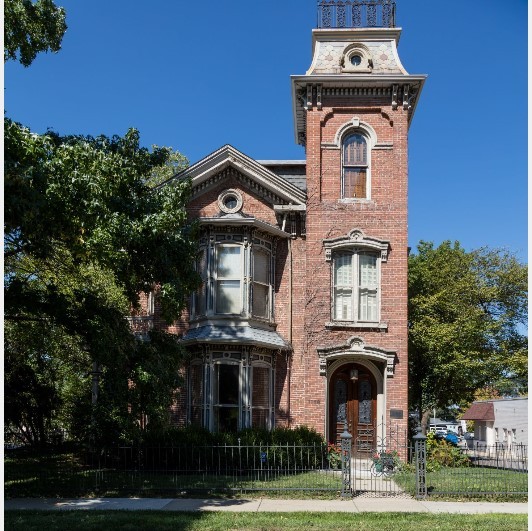
Drawing of front of Ward House in 1982, south elevation (HABS drawing)
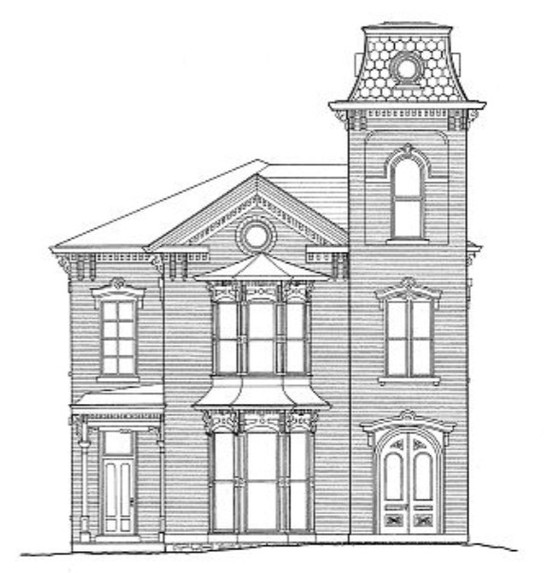
Drawing of west side of Ward House in 1982 HABS study by Ball State U.
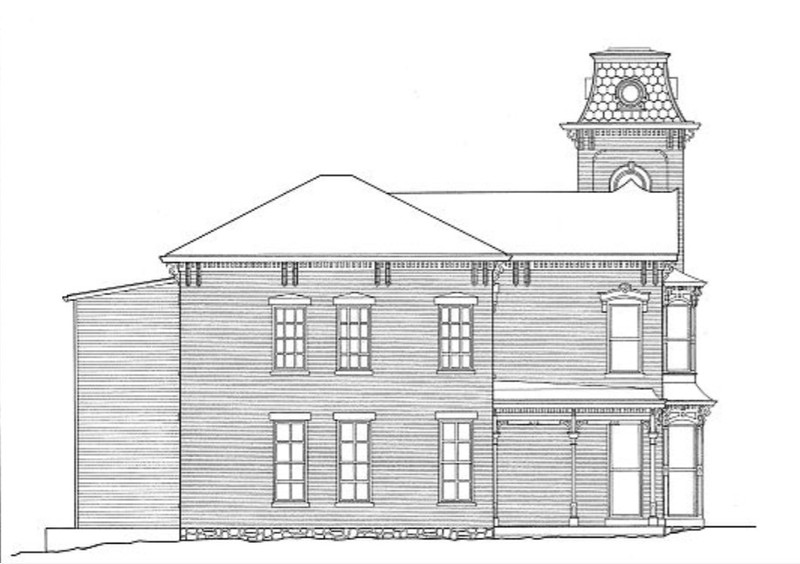
Site plan of James Ward House in 1982 from HABS documentation (Schroeder and Peacock)
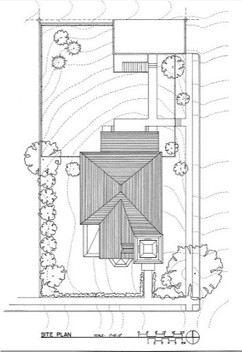
Architectural details of Ward House drawn in 1982: "hand" gas lights, mantels, door, brackets, cross-section
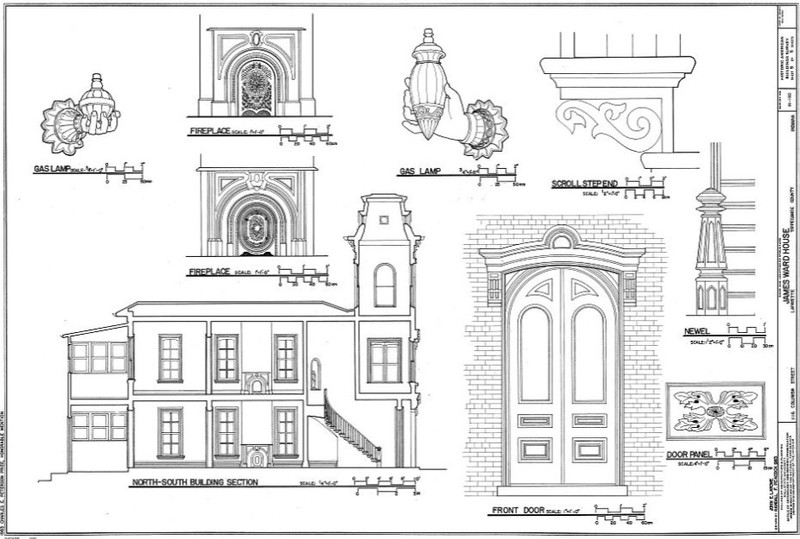
Backstory and Context
Text-to-speech Audio
The James. H. Ward House's tall, narrow windows, round-arched door, tall tower, and eaves supported by brackets point to its Italianate architectural style with a Second Empire influence. The brick house, facing south toward Columbia Street, has been deemed one of the most attractive examples of Italianate architecture still standing in Lafayette. The National Register listing cites its significance in architecture; the style combination is rare in the city. Situated on a high spot, the home has become a neighborhood landmark. The house is entered through the ground floor doorway in the tower (but the house is privately owned, so is not open to the public).
The builder of the Ward House circa 1860 is not known. The tower seems to have been added onto the house around 1875; the assessed value of the house jumped upward in 1874-1875. The Ward house is shown on the 1868 bird's eye view map of Lafayette as a two-story building without the tower. A two-story gable windowed projection west of the tower also seems to have been added onto the original structure. A shed-roofed rear addition lies to the north of the original house. It seems someone furnishing the Ward house had a quirky sense of humor. The gas lamp fixtures in the house are in the shape of a metal hand holding an object - see the drawing below with the multiple architectural details. The drawings were part of the HABS documentation by Ball State University in the 1980s.
James H. Ward moved to Lafayette in the 1830s as a child. He worked as a cashier for a local pork production company in the 1840s. Ward and William Potter established a dry goods firm in town in 1856. Three years later, James left and created a new company with his twin brother, William. They specialized in carpets and furniture, both wholesale and retail. A carriage house on the house lot served as a warehouse for the firm; the structure is a contributing part of the National Register listing. The retail store was on the second level of a building at Courthouse Square on Third and Main. After James died in 1912, his widow, Martha. lived in the house for three more years. The house was divided into apartments after 1915, and an addition linking the home to the carriage house was removed. The shed addition was built later as an enclosed porch or sunroom.
Cite This Entry
Paonessa, Laurie. "James H. Ward House." Clio: Your Guide to History. April 21, 2020. Accessed April 23, 2025. https://theclio.com/entry/99875
Sources
Arnold, Richard. Fogarty, Daniel. NRHP Nomination Form for James H. Ward House. National Register. Washington, DC. National Park Service, 1987.
Schroeder, Jeff. Peacock, Randall F. . James Ward House, 1116 Columbia Street, Lafayette, Tippecanoe County, Indiana. Volume HABS IN-192. Historic American Buildings Survey. Washington, DC. U.S. Department of the Interior, 1982.
https://www.loc.gov/item/2016631531/
https://www.loc.gov/item/in0225/
https://www.loc.gov/item/in0225/
https://www.loc.gov/item/in0225/
https://www.loc.gov/item/in0225/

